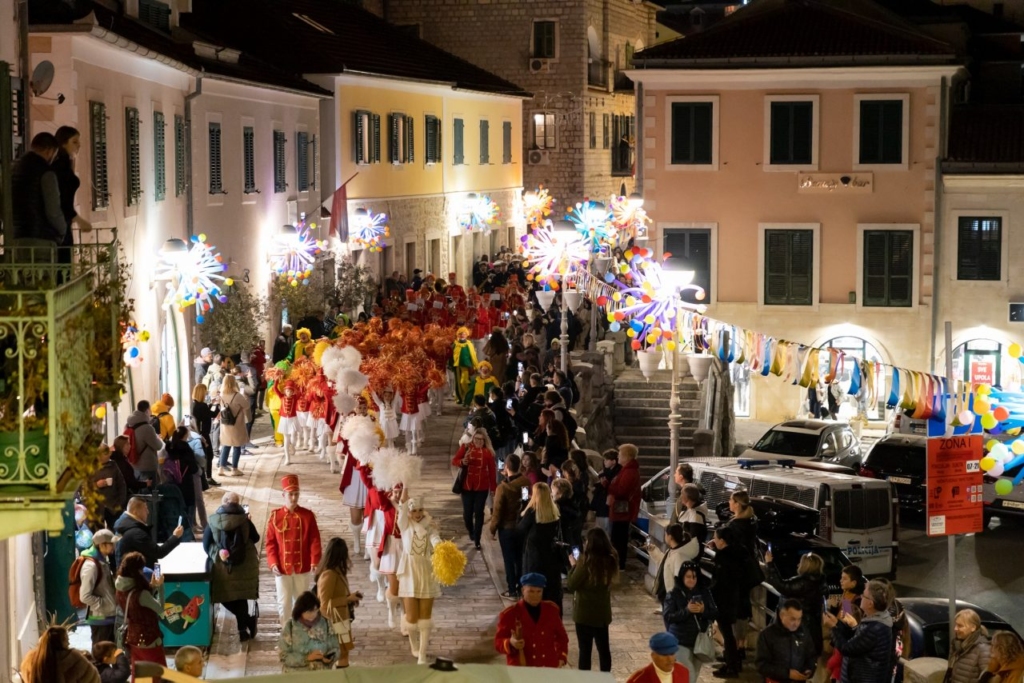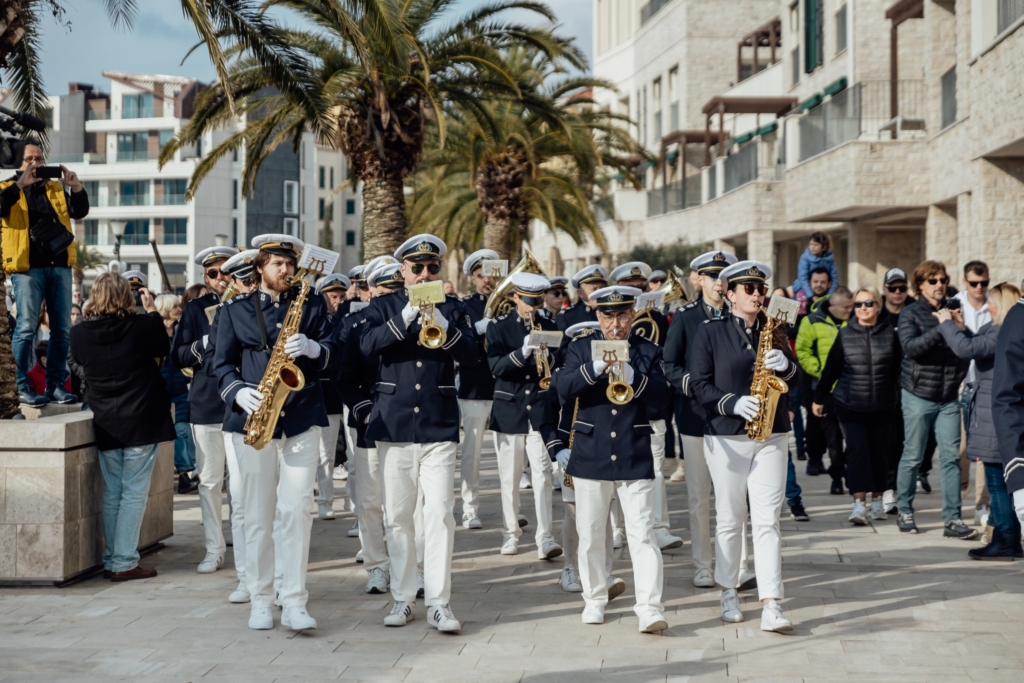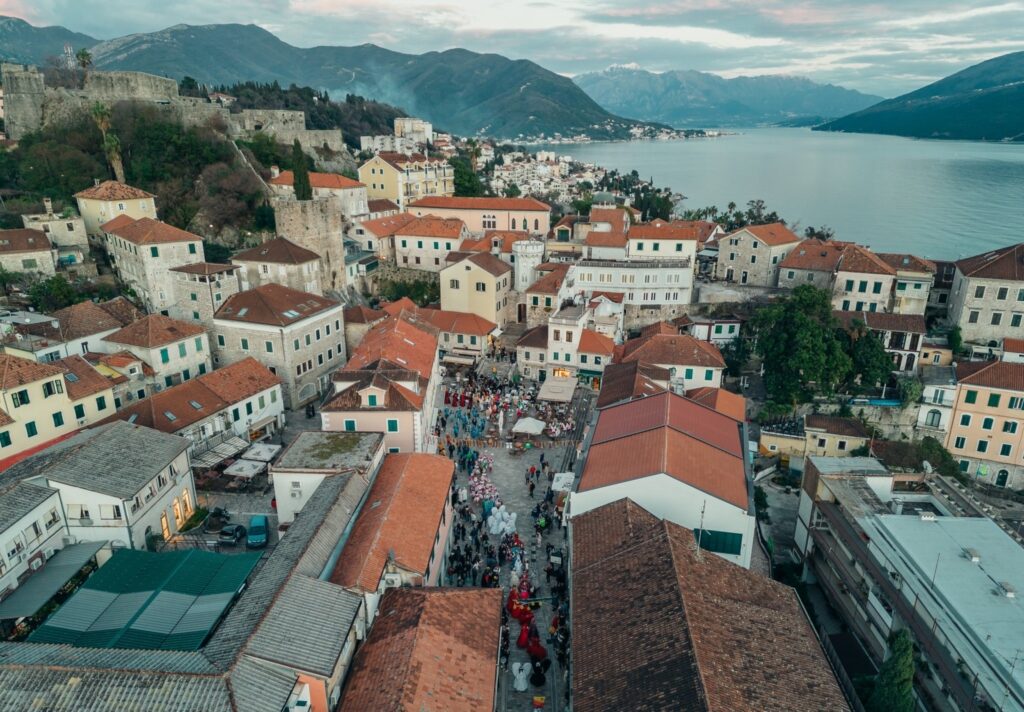The first indicator of spring in Montenegro is the famous Mimosa Festival. Celebrated for over half a century, this is one of the festivals with the longest tradition.
Spring has sprung in Herceg Novi! The town is bursting with the vibrant yellow blooms of the mimosa flower, which is a symbol of the Montenegrin coast. And there’s no better way to celebrate this beautiful flower than at the Mimosa Festival.
This festival is truly special because it has something for everyone, no matter your age. It brings together generations from all over the region to enjoy the beauty of the mimosa and the joy of the season.

You’ve probably noticed the mimosa flower all around lately, but do you know why it’s so significant and celebrated? It’s not just because it’s a pretty flower (although it definitely is!). The mimosa represents the end of winter and the beginning of spring – a time of renewal and hope. And that’s definitely something worth celebrating!
So come join us at the Mimosa Festival and experience the magic of the mimosa flower for yourself. You won’t be disappointed!
What is the Festival of Mimosa?
The Mimosa Festival is a traditional festival held annually in Herceg Novi. It occurs in the last weeks of February and the first week of March, so the dates differ from year to year.
The Festival of the Mimosa Flower is a beautiful tribute to one of Montenegro’s most beloved symbols – the mimosa flower. It has been celebrated for over 50 years and marks the beginning of spring, when the flowers start to bloom and the cold winter days are finally over.
Read Also: Montenegro Weather in March: What to Expect
The Festival started back in 1969 when the Tourist Association of Boka Kotorska and the Assembly of the Municipality of Herceg Novi came together to officially establish it. Since then, it has grown into one of the most popular festivals in the region, bringing together people from all over to celebrate the arrival of spring and the end of winter.
It’s amazing to see how generations of people have come together to celebrate the beauty of the mimosa flower and the joy that comes with the arrival of spring. In fact, the festival has become so popular that in 1975, even the president of former Yugoslavia, Josip Broz Tito, officially opened it!
Traditionally, many programs and activities occur within the festival. The most attractive are: carnival processions, masquerade balls for children and adults, the fish and wine festival, the international flower exhibition, promenade concerts of brass bands and majorettes, and many others.




The Flower of Mimosa
The fragrant yellow flower Mimosa originates from distant Australia. The famous sailors from Boka (Bokelji) brought it to Herceg Novi from their long journeys. Due to the favorable climate in this Mediterranean area, Mimosa soon became widespread and permanently settled in Herceg Novi.

Mimosa, the only flower that blooms during winter, is an important symbol for many peoples. It symbolizes women, emancipation, freedom, and sensitivity. Also, it symbolizes resurrection and immortality, signifies respect and kindness, and conveys faithful love. Nowadays, Mimosa is the trademark of the winter tourism of Boka Bay and the Montenegrin coast.

The stars of the Mimosa Festival – the majorettes
Get ready to be wowed by the incredible majorettes (mažoretkinje) at the Mimosa Festival! These stars of the show are not your average dancers – they perform complex and daring movements to the beat of the music, combining dance and gymnastics with marching.

These talented ladies are a sight to behold, decked out in their colorful costumes and sparkling batons. They’ve been wowing audiences for generations, so you know they’ve got some serious skills!
In fact, the majorettes are so talented that they were even part of the opening ceremony for the 1984 Winter Olympic Games in Sarajevo. And they’ve been strutting their stuff all over Europe, touring more than 50 cities with their carnival of majorettes, trombone players, and wind instruments.
So if you want to see some seriously impressive moves, don’t miss the majorettes at the Mimosa Festival. They’ll have you cheering, clapping, and wondering how on earth they can twirl a baton like that without dropping it!

In addition to the Mimosa flower, the Majorettes march, trombonists, and brass bands, the people of Herceg Novi also contribute to the festival’s atmosphere. Housewives prepare fried sardines on the streets and squares to entertain visitors and passers-by. Together with fish, they also serve homemade wine. Many tourists are particularly delighted with this gesture.

On the festival’s last day, a public trial of the Krnevola doll (piñata) is held. It represents the personification of evil and all the troubles that befell Herceg Novi during the previous year. Although the “trial” outcome is uncertain, the doll is usually sentenced to be burned. This act also implies the last ceremony of the festivities.

How to come to the Festival
The festival is held in Herceg Novi, a city located at the entrance to Boka Bay. Therefore, it is easy to come from any coastal town in Montenegro. From Podgorica, there are regular bus lines that go to Herceg Novi.
The Festival itself is free for visitors who have the opportunity to attend various musical concerts and other sports activities organized within the festival.
Other Festivals and Carnivals in Montenegro
Montenegro is an ideal destination for vacation and recreation, but also for getting to know the local culture of this small Balkan country. It hosts various festivals and carnivals throughout the year, so here is a list of other similar cultural events and celebrations in Montenegro:
- “Fašinada” in Perast
- “Bokeljska noć” (The Night of Boka) in Kotor
- Carnival in Budva
- Kotor Carnival






